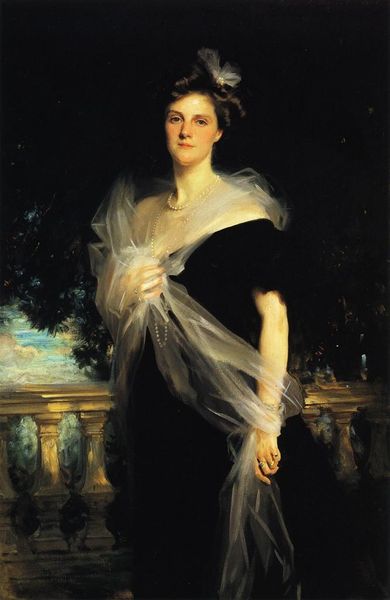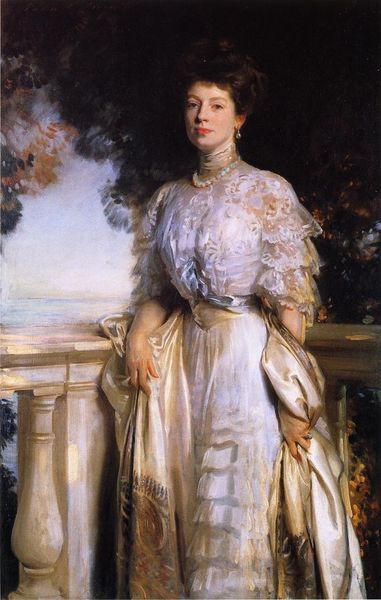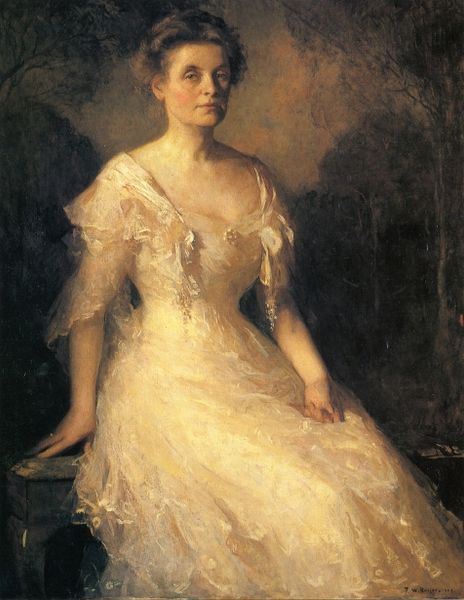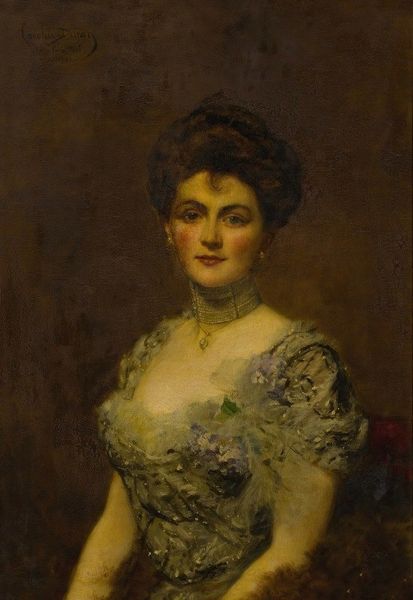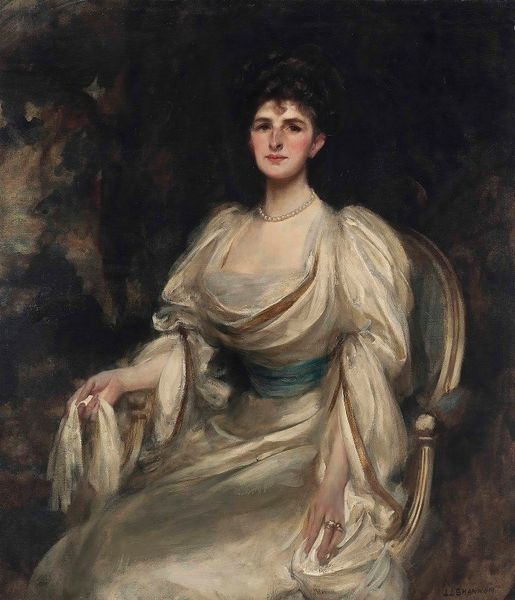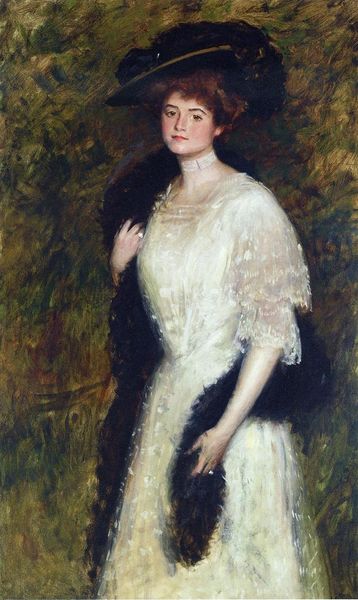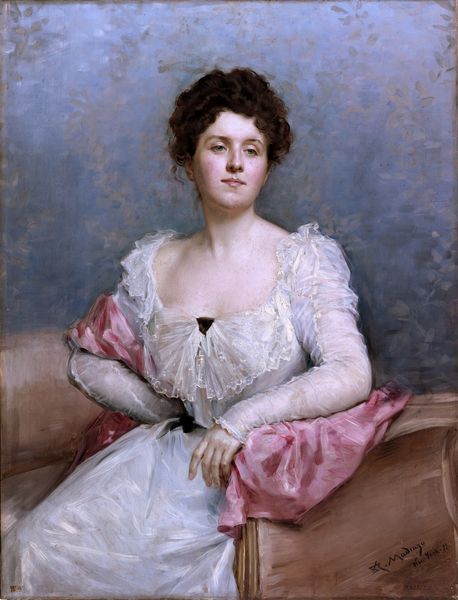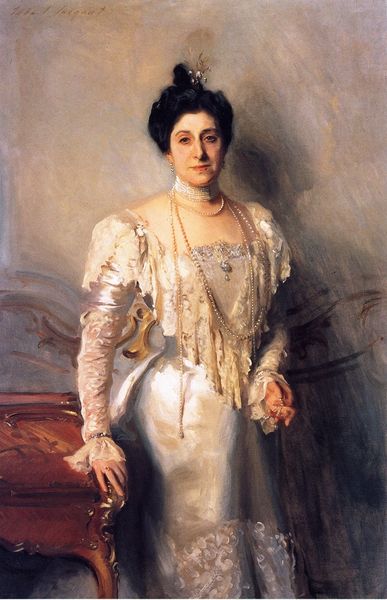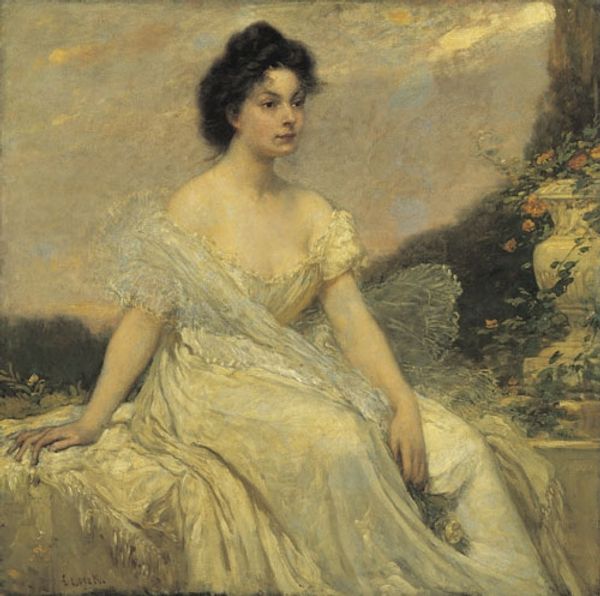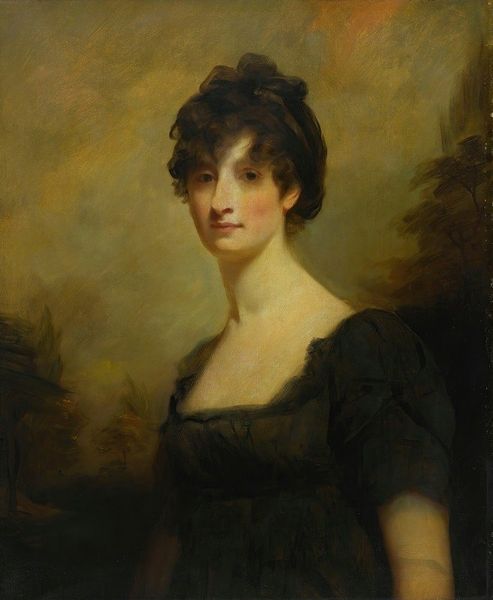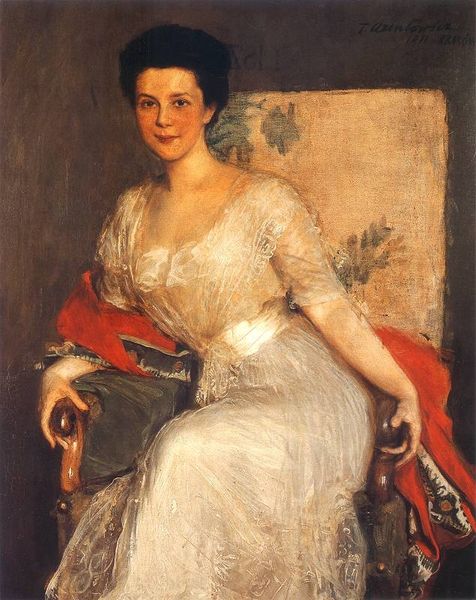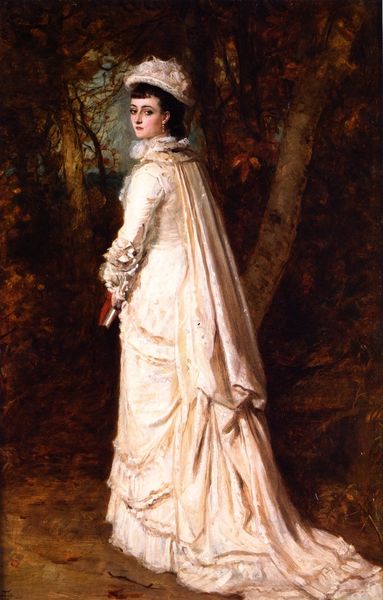
Copyright: Public domain
Editor: Robert Harris painted "The Countess of Minto" in 1903 using oil paints. She's standing in front of what looks like a dark, overgrown garden, and her pale dress really pops. I find it really striking how formal yet somehow a bit melancholic it feels. What do you see in this portrait? Curator: For me, this portrait offers a glimpse into the Canadian elite at the turn of the century. The Countess, wife of the Governor General, embodies a particular image carefully constructed for public consumption. The way Harris paints her – a soft, almost ethereal rendering – is interesting when considered against the backdrop of the strict social expectations placed on women of her station. Editor: So, you're saying the painting reflects not just who she was, but who she was *supposed* to be? Curator: Exactly. The choice of setting, that seemingly natural yet undoubtedly manicured landscape, mirrors the Countess’s own position. There’s a tension here, between naturalism and artificiality, freedom and constraint. It makes me wonder how much say she actually had in how she was depicted. Do you think the portrait is truly about the Countess, or about the role she played? Editor: That's such a great question! I guess I was initially drawn to her personal expression, but the idea of the "role" being the focus makes the piece so much more layered and political. Curator: And it highlights the power dynamic between artist and subject, the Countess and the Canadian public, doesn’t it? Editor: It certainly does. I’ll never look at society portraits the same way again. Curator: Likewise. Thinking about the historical context really deepens the reading of an artwork.
Comments
No comments
Be the first to comment and join the conversation on the ultimate creative platform.
